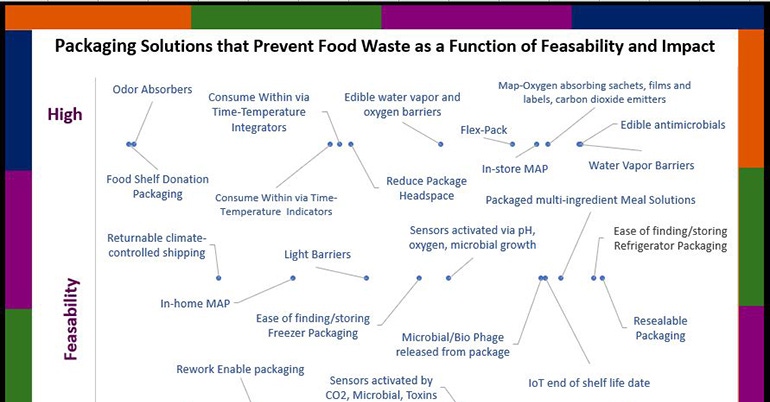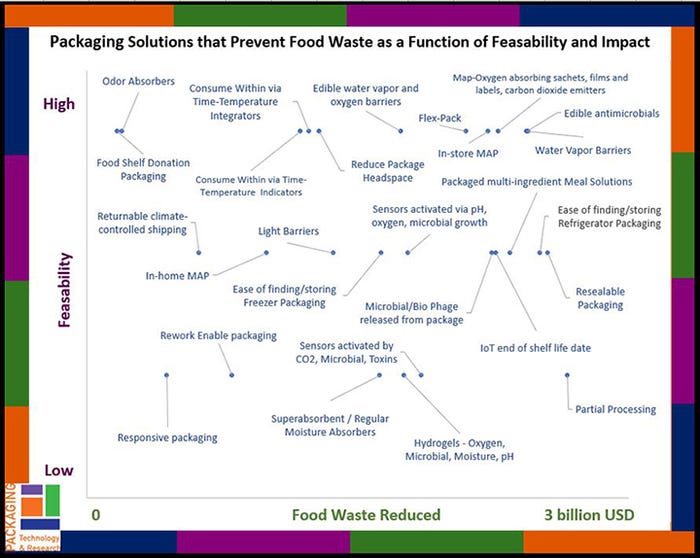Packaging Solutions That Prevent Food Waste
Brands and suppliers should focus on packaging solutions that prevent food waste rather than reduce it to “make the world a better place.”
October 14, 2020

I was recently asked, “Will hemp-based packaging prevent food waste?”
This question illustrates the confused intermixing of packaging waste and food waste and the packaging industry’s need to come to grips with their potentially powerful role in achieving a more sustainable food system.
It also highlights the need for the packaging industry to focus on food waste prevention, not just reduction.
Highest on the EPA impact hierarchy of food waste, prevention mitigates much more environmental damage than food waste diversion.
Prevention is also where packaging is uniquely the best equipped to move the dial.
Food waste has hovered at about 30% for at least 50 years. But what has changed is a meaningful and quantifiable link between packaging and food. This is in the form of the United Nations Strategic Development Goals (UNSDGs) Target 12, which ultimately applies a favorite basic tenet of Girl Scout Law: “Use resources wisely.”
In response to UNSGD Target 12 (see graphic) and the Paris climate agreement, most major food brands and retailers are actively pursuing food waste prevention targets. While many packaging suppliers inherently enable food waste prevention with high barrier packaging, more enterprise is needed. This involves interfaces between brand operations, the value chain, and packaging suppliers, such as the solutions found in the featured Graph below. Many readers will see the technologies your companies employ. This is wonderful!

However, some packaging companies do not have food waste prevention targets; this is a misaligned omission, indicative of a hardworking industry very busy with more sustainable packaging, heavy competition, and other issues than to rise to the occasion. The featured graph shows the impact of preventing food waste versus technical readiness of packaging solutions. Packaging suppliers can align with these solutions to focus on food waste prevention, aligned with brand needs, and, as the Girl Scouts also pledge, “Make the world a better place.”
Less waste, more profit.
For the food industry, less food waste often means more profit, a major economic driving force. Reducing food waste during manufacturing increases efficiency while creating coproducts increases revenue; for example, whey protein isolates are a byproduct of cheese,
Likewise, reducing unsalable products at retail essentially ensures that more food that is shipped, stored, and stocked, is sold to consumers. A reduction in the ~40% of food waste at retail and restaurants will save retailer labor, energy, and money. It also will free up business acumen for retail and restaurant innovation.
For the packaging industry, there is potential to reach beyond the focus of more sustainable packaging and help achieve a more sustainable food system and connect more meaningfully with consumers. Indeed, more sustainable packaging has a role to play, but perspective is essential — packaging generates about 80% less the Greenhouse Gas than food waste. The relative GHG impact varies by category (DOI: 10.1126/science.aaq0216). We can waste less food and less packaging by preventing food waste.
Consumer-meaningful packaging.
Clearly, a much better approach is to research, develop, and use packaging solutions such as those noted in the Graph more widely and wisely. In the packaging industry, making connections to retailers, restaurants, and consumers are absolutely essential. This link can readily be made with packaging to reduce the ~45% of food waste after consumers have purchased food. When consumers discard food with its packaging, we have both food and packaging waste. The environmental impact of growing, harvesting, manufacturing, packaging, distributing, selling, and buying packaging food and then throwing it away is high. While we have the technology to separate food from packaging to compost the food and dispose of the packaging properly, this still does not prevent food waste. Campaigns such as SaveFood have made an impact on consumers. Also, by engaging brand owners with consumer-meaningful packaging solutions, such as those noted in the Graph, the packaging industry can help achieve a more sustainable food system.
Yes, it is true that if we in the food and packaging industries decrease food waste after the consumer has purchased it, that will decrease food and packaging sales; it follows that consumers will not need to replace as much spoiled packaged food.
But along with this decline, we have the opportunity to regain consumer trust in the packaged food industry — and we have the social responsibility to do so.
So, while employing hemp and other bio-derived packaging materials will decrease the use of fossil-derived packaging, it will not help achieve a more sustainable food system if the growth, conversion, and use of hemp drains more resources than current packaging, or if the hemp-based package does not protect the food enough and results in higher food waste.
It appears there��’s always long answers to seemingly simple questions.
Claire Sand, Owner, Packaging Technology and Research, and Adjunct Professor
www.PackagingTechnologyAndResearch.com
About the Author(s)
You May Also Like




